The structure of the Sassanid army
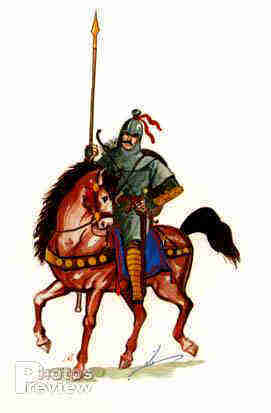
about Iranian army in the Sassanid era More information has reached us, and aside from the writings of famous Roman historians, such as Procopius, Amen, Marcellus, Justin, etc., Armenian and Jewish historians, and finally the historians of the Islamic period, have also left us useful information on this subject..
Above all in Shahnameh of Ferdowsi There is relatively detailed information about the wars, conquests, and fortresses of the Sassanid era, and by carefully examining them, it becomes clear that Ferdowsi had good evidence, because most of the events and even the battlefields and treaties that were concluded in between, as well as the names of the fortresses. And the description of their siege and conquest and the names of the Roman generals and emperors with a slight difference in terms of their spelling and pronunciation are found in the Shahnameh, and perhaps these names reached Ferdowsi in the same way, or they were written in the many versions that he later wrote from the original version of the Shahnameh. And these partial deviations have been achieved.
At the beginning of this period, Ardeshir Pabkan, the head of the Sassanid dynasty, led the Iranian army from guerrilla mode took out and in the face Regular and permanent took off. According to historians, since the time of this king, permanent garrisons were established in Iran, whose maintenance was paid for by the government and the rations and duties of the soldiers from the treasury of the king.. During this period, the Iranian "armymen" or military had the second place among the four classes of society, and the organizations related to managing the affairs of the army are known to be of primary importance..
Sporgan
Due to the size of the country and the need to have a quick reaction force to confront the Roman armies on the west side and prevent the invasion of the savage tribes of Central Asia on the east side during the Sassanid period, just like the Parthian period, the main branch of the Iranian army was the cavalry part, but in terms of training And the organization and equipment have been completely different from Parth riders.
The Sassanid kings paid special attention to the education and training of riders, and they assigned experts called "Andarzbad Sporagan" to different garrisons to teach riding techniques, how to sharpen weapons, and combat methods of this rank to officers and people.. Care was also taken in raising and maintaining horses, and special attention has been paid to improving their breed and eggs.. In order to treat the horses, there were experienced horsemen called "stor mesic" who visited all the barracks and treated the sick horses..
During the war, they added to the weight of the horses so that they would not lose their feet soon due to the hardships of the war.. The cavalry of the Sassanid period was more heavily armed and its offensive ability was such that they often attacked the Roman legions quickly and on horseback.. The heavy rider of the weapon was completely covered in iron and steel, and his offensive weapon was a long and strong spear, sometimes a slingshot, and often a sword and an ax.. His defensive weapon consisted of a small shield, his armor and helmet that protected the face and back of the neck, as well as knee braces and iron arm braces.. These riders used to wear leather bridles on their horses.
Amen Marcellin the Iranian cavalry in the "Merenga" battle between Julian the Roman Emperor And Sassanid Shapur the Great It happened like this
"The noble column that came towards us under the leadership of Mehran, the commander-in-chief of Iran's cavalry, was made of iron and steel, the iron pieces that cover their legs were joined together in such a way that the people could easily move their body parts.. Their helmet itself protected the entire head and face and even the back of the neck, only in front of the eyes and mouth there were small slits to see and breathe.. Except for these gaps, the enemy's weapon could not work for these people.

Continue the description and other photos in the rest of the article
To download the unique book of the Sassanid Army, go to the next article
From the light cavalry of the previous period (Parthian) At this time, the name is mentioned less and from the historical accounts, it is clear that the work of this part of the cavalry in the Sassanid army is often done.” It has been the responsibility of agile and light-weight Arab riders (Discoveries, delaying and damaging operations and surprise). The most distinguished part of the cavalry in this period is the royal guard units, which were known as "Javidan" and "John Spar"..
Among the guerilla riders that the puppet sultans of Iran led to serve the government, the Dilamis, the Chols of Gorgan, the Gilaks, and especially the Ramanes were famous for their bravery and horsemanship..
Pagan
Iran's infantry elite in this period consists of shooters who were considered the best in their art of that era and were always a source of fear and terror for the Romans. According to most accounts of Roman historians, the speed and skill of Iranian shooters was such that they could kill a Roman soldier with each shot. They would walk and it was rare for their arrows to go astray. During this period, Iranian shooters had large mesh shields and placed these shields in front of them like a wall and shot through their mesh with great skill..
In most of the battles, it can be seen that the soldiers of Rashid Rumi had the courage to confront the Iranian soldiers, who made sure that there were no more bullets left in their shells..
The actions of the shooters became more dangerous during the retreat, and it was a proverb among the Romans that: "One should be wary of the Iranians, especially when they are retreating".
Other infantry units were armed with swords and spears and some with harpoons and placed them behind the shooters..
elephant riders
A new order that emerged during the Sassanid era is the order of elephant riders, who are actually the successors of the chariots of the Achaemenid period and the predecessors of today's war chariots, especially since the sight of elephants caused fear and panic among the Romans.. Amen Marcellin in the first stanza of the book 19 He clearly mentions this: "The sight of the war elephants of the Iranians made the hearts stop working, and the sound of this formidable animal and its smell also caused our horses to panic.". The number of elephants used by the Sassanid army in the battle with the Romans, according to the historians who participated in these battles, reached from two hundred to seven hundred chains.. It is known that elephants were used until the end of the Sasanian period, because in the battle of Qadsiyah, the presence of elephants in the Iranian army first caused fear and defeat of the Arabs..
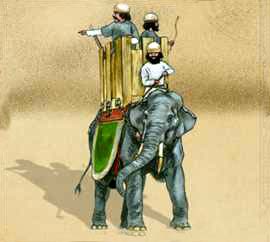
During the Sassanid period, the Iranian army was so dependent on the presence of elephants that sometimes they took elephants with them in mountain battles, and for this purpose, they paved the mountain roads ahead of time.. According to the narrations of Roman historians, they used elephants during the siege of important cities and castles..
Military jobs
The biggest military job in the Sassanid era is the job of "Eran Espahbad", the owner of this job was in fact the commander in chief of the forces, and in terms of politics, he was responsible for negotiating peace and concluding military agreements.. Eran Espahbad was the first member of the Royal Council and held the first position after the Shah.
It is worth mentioning that because most of the Sassanid sultans were in charge of the command during the war, therefore they took over the duties of this person themselves, so that during the time of Anushirvan, along with the reforms that were made in his army, the job of "Eran Sepahbad" was canceled completely. The country was divided into four military regions and a general was appointed to command the resident forces of each region.
One of the privileges of Espahbad was that when he entered the camp, drums and trumpets were played in his honor.. According to some historians, he had the second position in the hierarchy after the job of "Eran Sepahbod" as the commander in chief of the Cavalry.. The job of the head of the army reserves and weapons was assigned to "Bad Anbarak" and this person has the third place in the hierarchy.. The job of "Erk Bad", which is like the commander of Dezhban, is considered one of the most important jobs in the army and is often assigned to members of the royal family..
The commander of the cavalry was called "Spurgan Salar" and the commander of the infantry was called "Paygan Salar" and the commander of the shooters was called "Tirbed"..
Heading the Royal Guard, as "Pushtikban Salar", has also been an important military job. Roman historians point to another job in the Sassanid army, which is "Spah Dadur", and it was actually similar to the job of "Qazi Askar"..
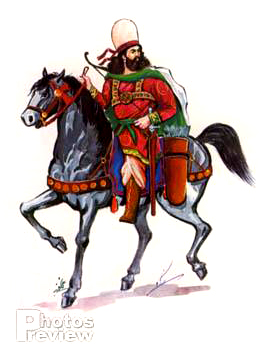
The weapons and equipment of the Iranian army were stored in special tanks in the Sassanid era, which were called "storehouses" and "treasures".. The officers of these tanks were responsible for their good maintenance and repair, and as soon as the order to move a part was issued, they were obliged to deliver the weapons and necessary equipment of the people of that part without defects and after the end of the operation, take them back and put them in the warehouse..
Army units
Although there is no accurate and reliable information about the precise organization of army units, but from the news and narratives of historians, it appears that the largest army unit was called "Gand" and its commander was called "Gand Salar" and each Gand was composed of several "Darfesh" and every Darfesh included several "vashts".. Because every Darfesh had its own flag, maybe it was considered like the old regiment or regiment today.
Regardless of the Gunakuni flags that were common in the Sassanid era army, the biggest national and military flag of Iran in that period is the famous Darfesh Kaviani, which, according to all historians, was highly respected by Iranians and was considered the motto of the nation and the harbinger of victory and victory. It was covered with diba and parniyan. As a result of these decorations, the width and length of the curtain of this flag had increased so much that at the end of the Sassanid period, 15 foot in 22 Leg (5 until the 7 Meter) It is said that the roots of its curtain were red, yellow and purple. Ferdowsi says in describing it:
| When did you cut that skin on the spear? Give a star to Niki Bring it to my home Zagohar bar and body of gold canvas It rises on its head like the round moon One of Zal Farrokh will throw away the king Sale of red, yellow and purple You all read it as a poem From then on, whoever took it Sometimes it's time to wear a hat On that priceless leather of blacksmiths Hanging new gems Zadibai full of flavor and filling That's how Akhtar Kavian went | 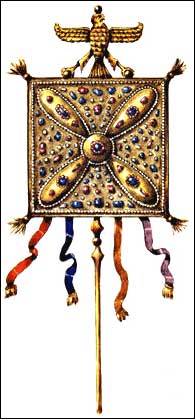 |
In big wars, it is often seen that Kavyani's shield was moved with the army, as Ferdowsi mentions this point several times in his "Shahnameh"..
The Sassanid emperors did not entrust this flag to anyone except the commander-in-chief, and after the operation was finished and the units returned, this flag was handed over to the special treasurers who were responsible for its protection and kept in the royal treasury..
Military Council
According to the narrations of the Roman historians, the Sassanid emperors used to form a council composed of the country's commanders and elders to declare war and start a military campaign, and they raised the need to go to war in that council. When the necessary decision was made. According to the importance of the issue, the council meeting could last for several days. As during the invasion of the Roman emperor Justinian to the borders of Iran and the attacks against Munzerin Noman, the Sultan of Hirah and under the protection of Iran, according to the explicit narrations of Prokop, Anushirvan ordered the formation of a military council before proceeding to war, as did Ferdowsi. It refers to this:
He should read all the pious and religious people and write a few words in the letter
He was inside it for three days, with Cho's wife's vote, with the warriors of Lashkar Shekan
Fourth, it was agreed that the flour should be sent to the army of Caesar
Therefore, it is clear that the meetings of the military council could last for several days.
Fortification and fortification
Unlike the tactics of the Parthian period, which were often carried out in the form of fighting from a distance, fleeing, and large-scale encirclement maneuvers, in the Sassanid period, due to long experiences in the wars of Iran and Rome, close-up attacks and hand-to-hand combat were adopted and regular battle formations were adopted. According to Amen, Marcellin and Procopius, Iranians were equal to the Romans in this respect and even often superior to them.. On the other hand, the Sassanid army had acquired complete skills in fortress building and siege techniques.
In general, it should be kept in mind that at the beginning of the Sassanid era, engineering in Iran was not very prosperous, as we can see that during the captivity of the Roman Emperor Valerian by the hand of Shapur I, the Shah of Iran asked him to attract a group of Roman engineers to Iran and they forced to build a dam (happy) wash off. Valerian complied with Shapur's request and the Shushtar Dam and the canals under the city were built by Roman engineers, and perhaps for this reason, it later became known as the "Kaysari Dam"..
But later it can be seen that for the siege of the forts and forts, the Romans used all kinds of tools and devices that were common at that time, such as catapults, movable turrets, ram's head, etc.. During the siege of strong Roman castles that have deep moats around them, they often dug underground corridors to reach the moat and fill it, and they also penetrated under the towers of the castle through tunnels and blew up and destroyed the towers; Sometimes they built high hills around the forts, which overlooked the tower and ramparts of the castle, and they shot the defenders from above..
Most of the time, large stones were thrown into the castle with a catapult or "flasks" containing burning substances were thrown.. Iranians were trained and skilled in fortifications, and by pouring molten lead and tar materials from the top of the towers, they disabled the enemy's siege devices and pulled the rams' heads up with lassos or stopped them from moving.. Marcellin says about the use of Qirandod and Suzan Amien materials: Julian decided to bring his ships from the Euphrates River to the Tigris River from the "Nehr Malek" and sent a part of the Roman infantry with ships to the coast of Iran to form a bridgehead.. Iranians threw burning materials on the ships and set them on fire and prevented people from disembarking. In another place, he says that the Iranians had covered their rams' heads with leather to prevent them from burning.
discipline
In the Sassanid army, there was very strict discipline and for important military crimes: (Betraying the king, disobeying the commanders' orders, rebellion, escape) Severe punishments were applied. One of the important duties of the officers has been to maintain military secrets, as Amen Marcellin in para 23 Book 31 He refers to it himself:
"All the information that reached our camp through scouts and refugees was contradictory to each other, because in Iran, no one knew about the plans of the war and the intentions of the commander except the senior officers, and we could not get the slightest information from them, in order to keep the secrets. They considered military service to be one of their religious obligations and did not express it at any cost..
Mandatory visit and payment
At the time of payment, the soldiers should pass through the Sun, and they only paid those who had no defects in their weapons and equipment.. No one and no official was exempted from this rule. As Babak did not pay the salary of the officers to the king personally, because during the visit it was found that Anushirvan had forgotten two spare strings of his bow and he had to return to the royal palace and fetch and bring his two spare strings and after It has received rights.
The food of the soldiers is also taken care of, and their food during the war was more nutritious than during the peace and consisted of bread, meat, and milk, and the most severe punishment was used for those who stole from the soldiers' food..
In addition, they strictly prevented the publication of news and some statements that might cause pessimism and create despair and weaken the morale of the soldiers, and during the war, this issue was one of the essential duties of the commanders..
In short, it was in the light of bravery, dedication and strong discipline of this army that the Sassanid emperors were able to defeat the famous Roman emperors with their great armies, including: Emperor Valerian during the time of Shapur I and Emperor Constantine and Julian during the time of Shapur the Great and Emperor Anastasius during the time of Qabad and Emperor Justinian during the time of Anushirvan .

• • • • • • • • • • • • • • • • • • • • • • • • • • • • • • • • • • • • • • • • • • • • • • • • •
To download the book (Sassanid army) Click on the link below


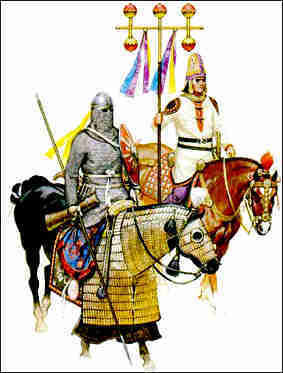
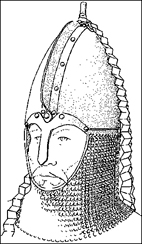


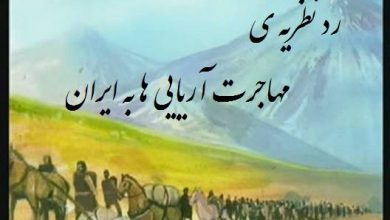
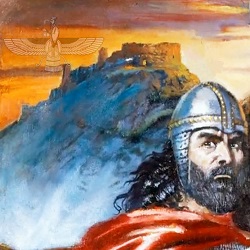
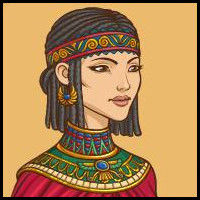
Where is the grave of Rostam, Sohrab and Afrasiabi which is in Shahnameh?
human… Think, believe, can an elephant live in Iran and Kermanshah, when the Sassanid army was an elephant?
Dominating parts of India and taking elephants for the same. Of course, a race of elephants lived in Iran, especially in Fars province
It is really magnificent. Sassanid soldiers are also the same in the game Attila Total War. Unfortunately, the cultural institutions of the country do not do any cultural work for this glorious history.
It's not that they can't, they don't want to
Thank you brother, it was great
Greetings to all patriotic Iranians
It is sad that after the attack of the thazians, they stole everything from us, from the knowledge of the Iranians to……